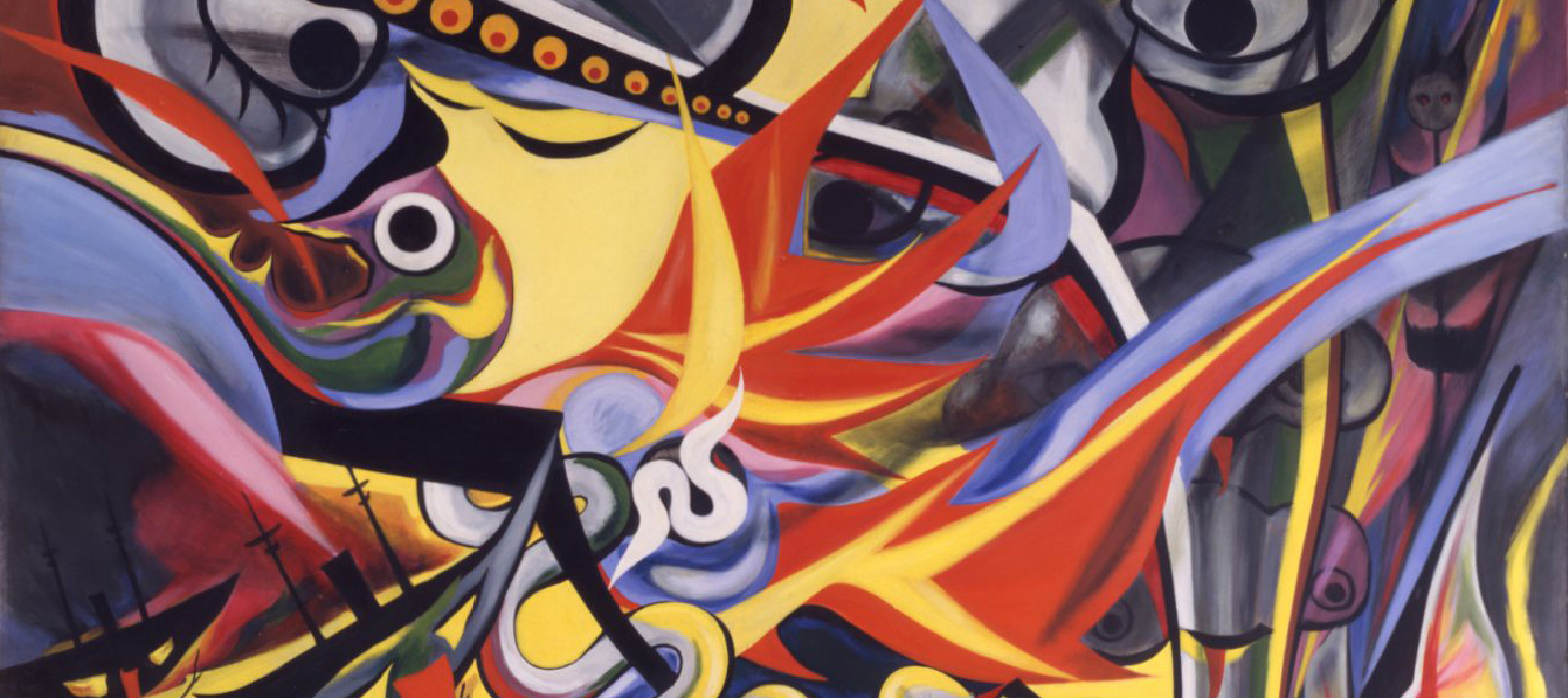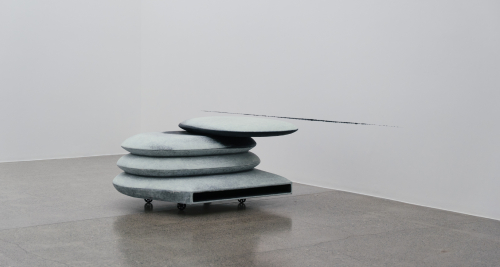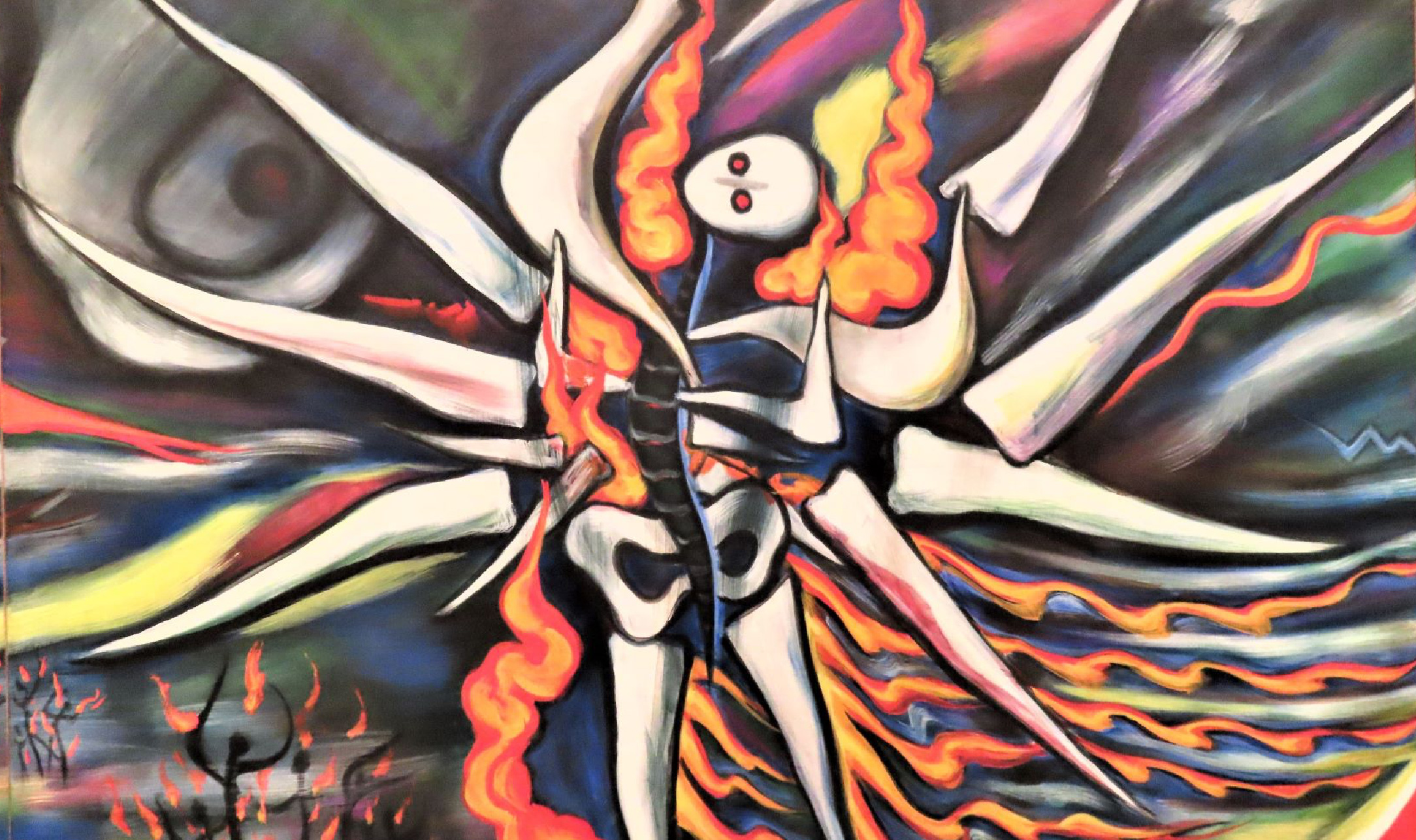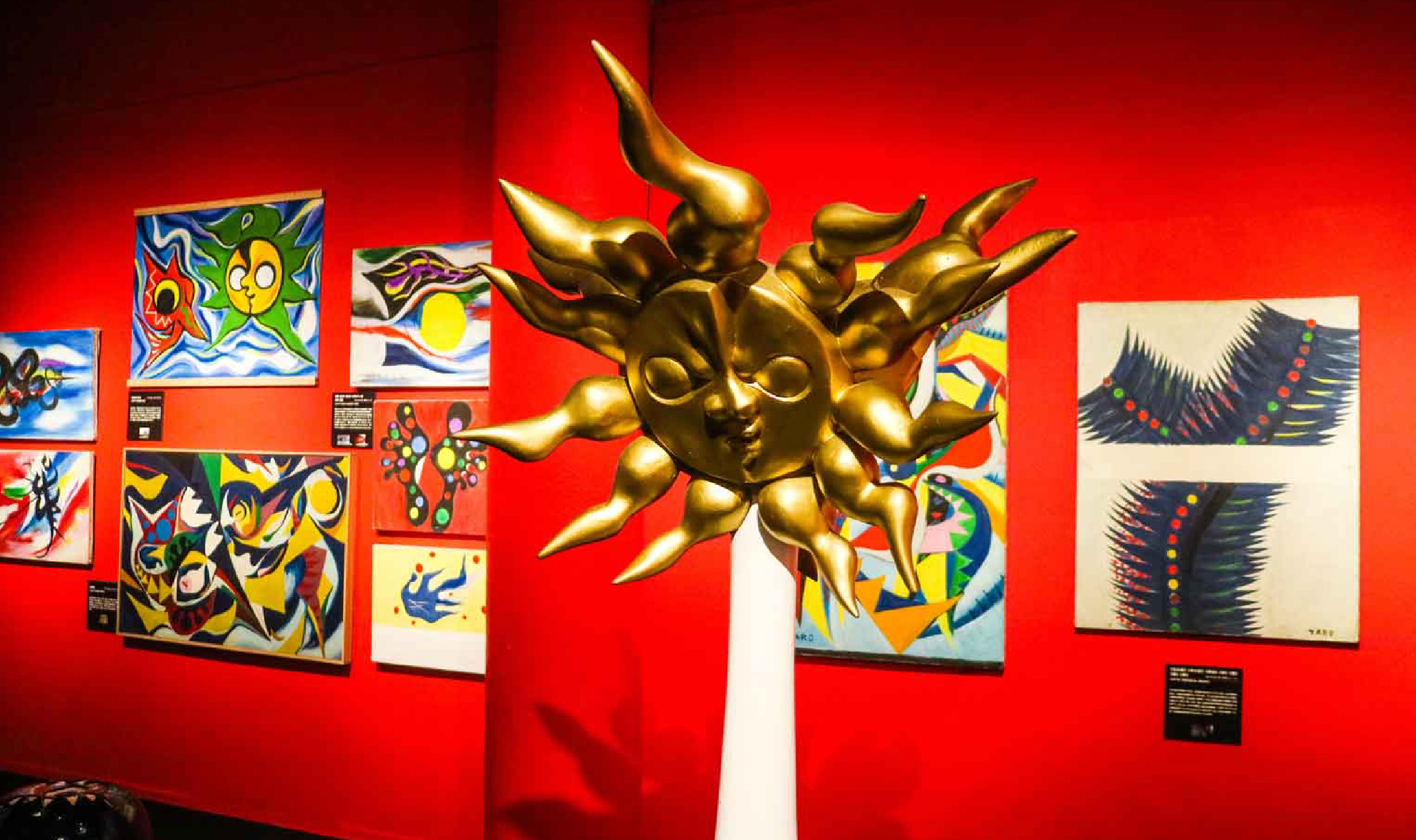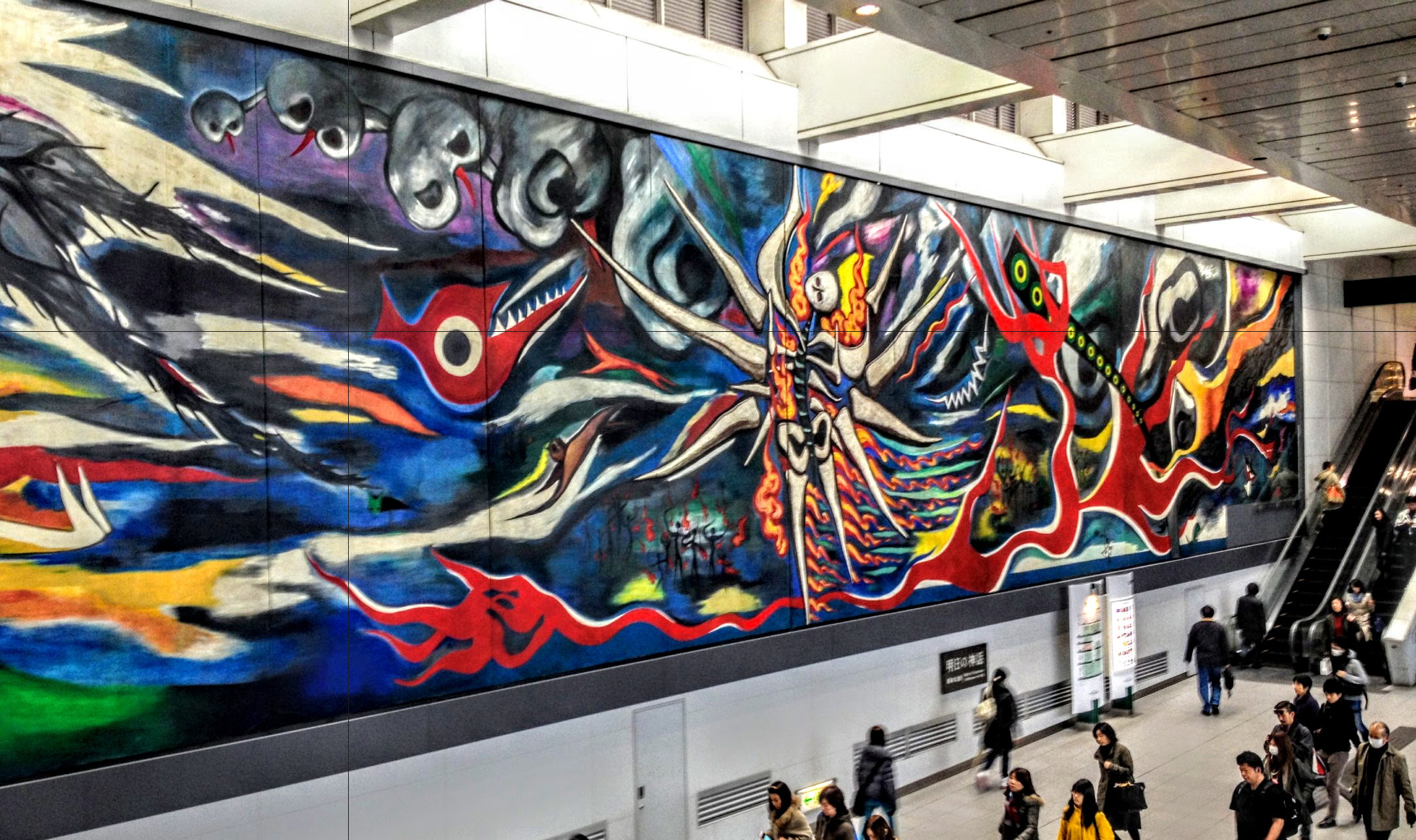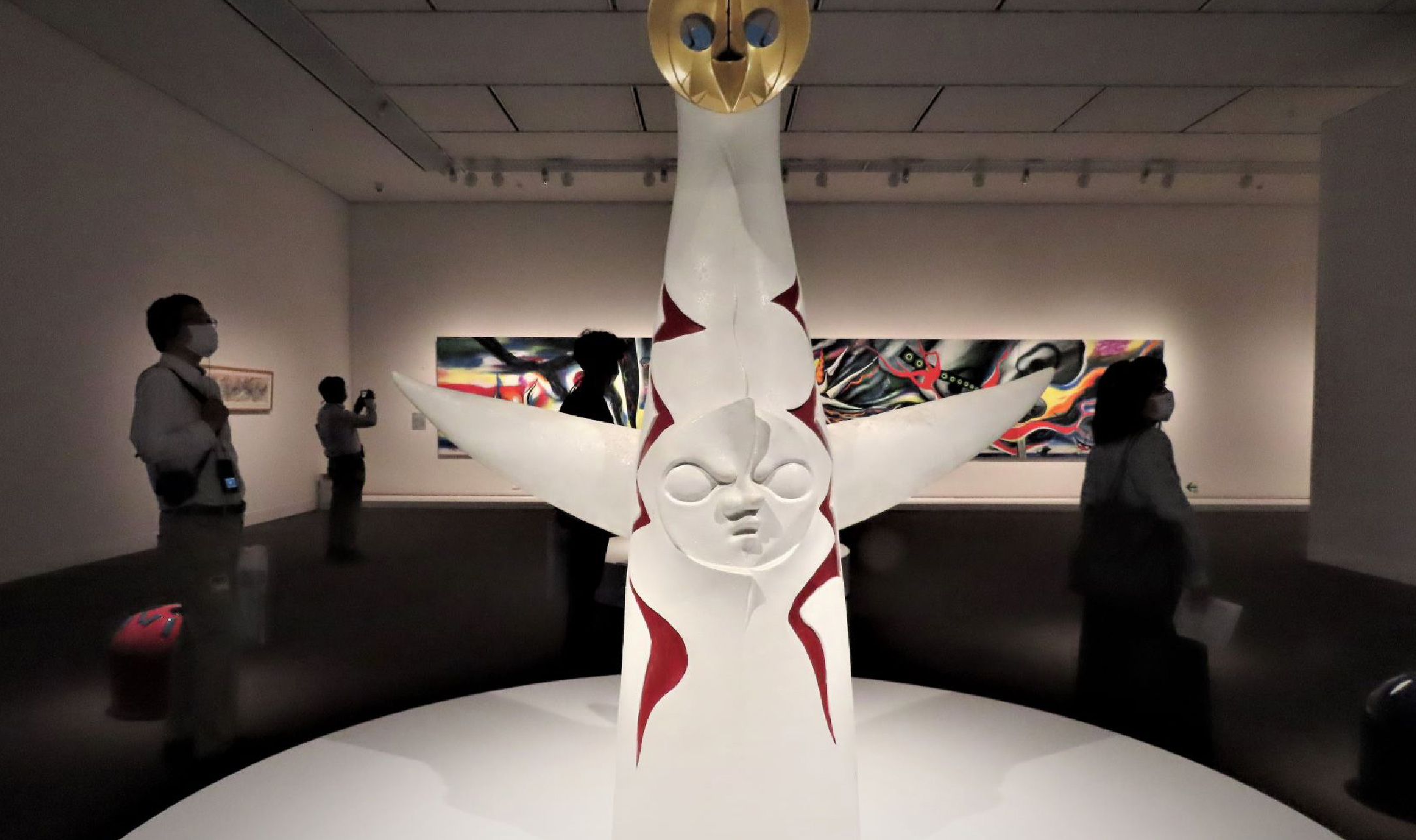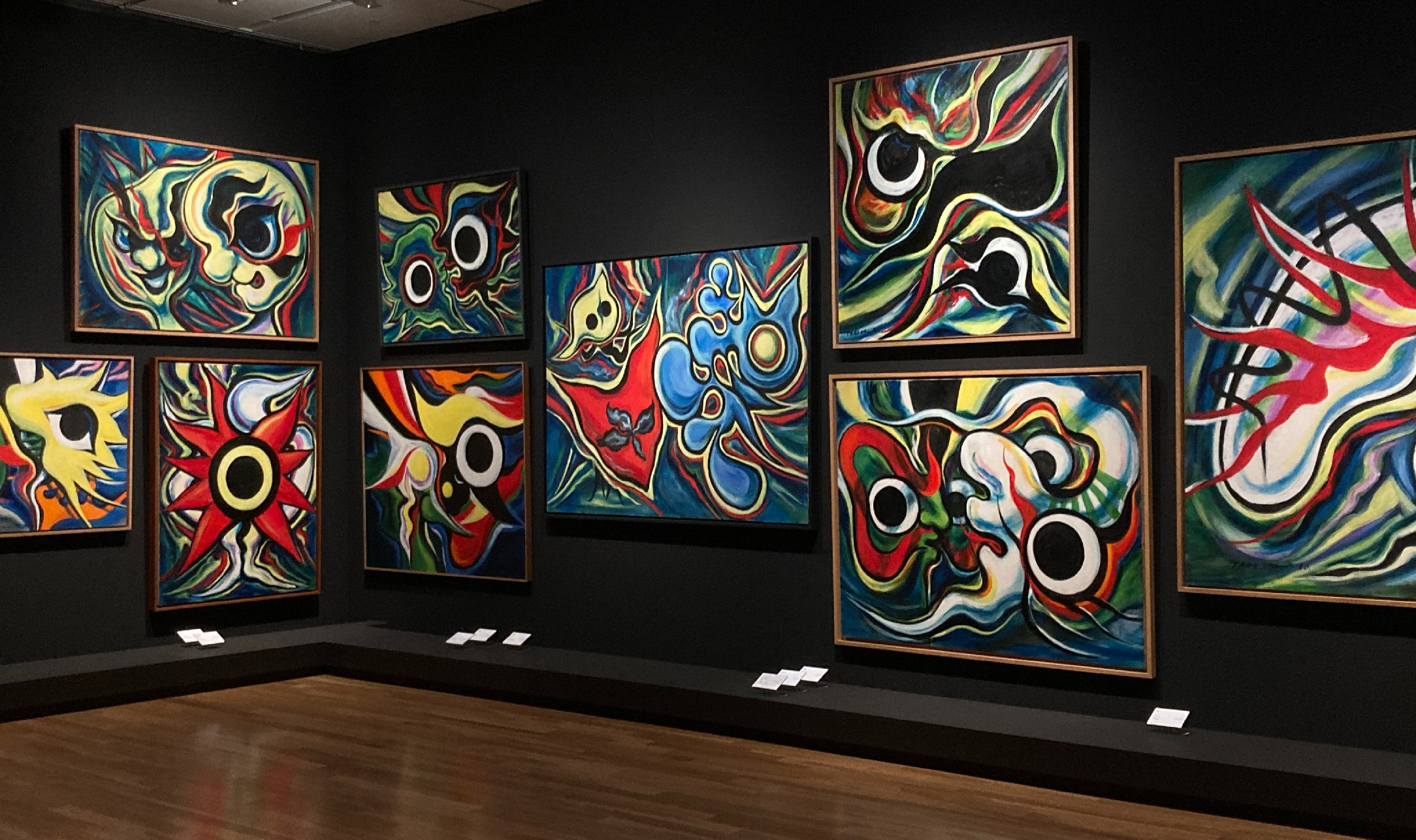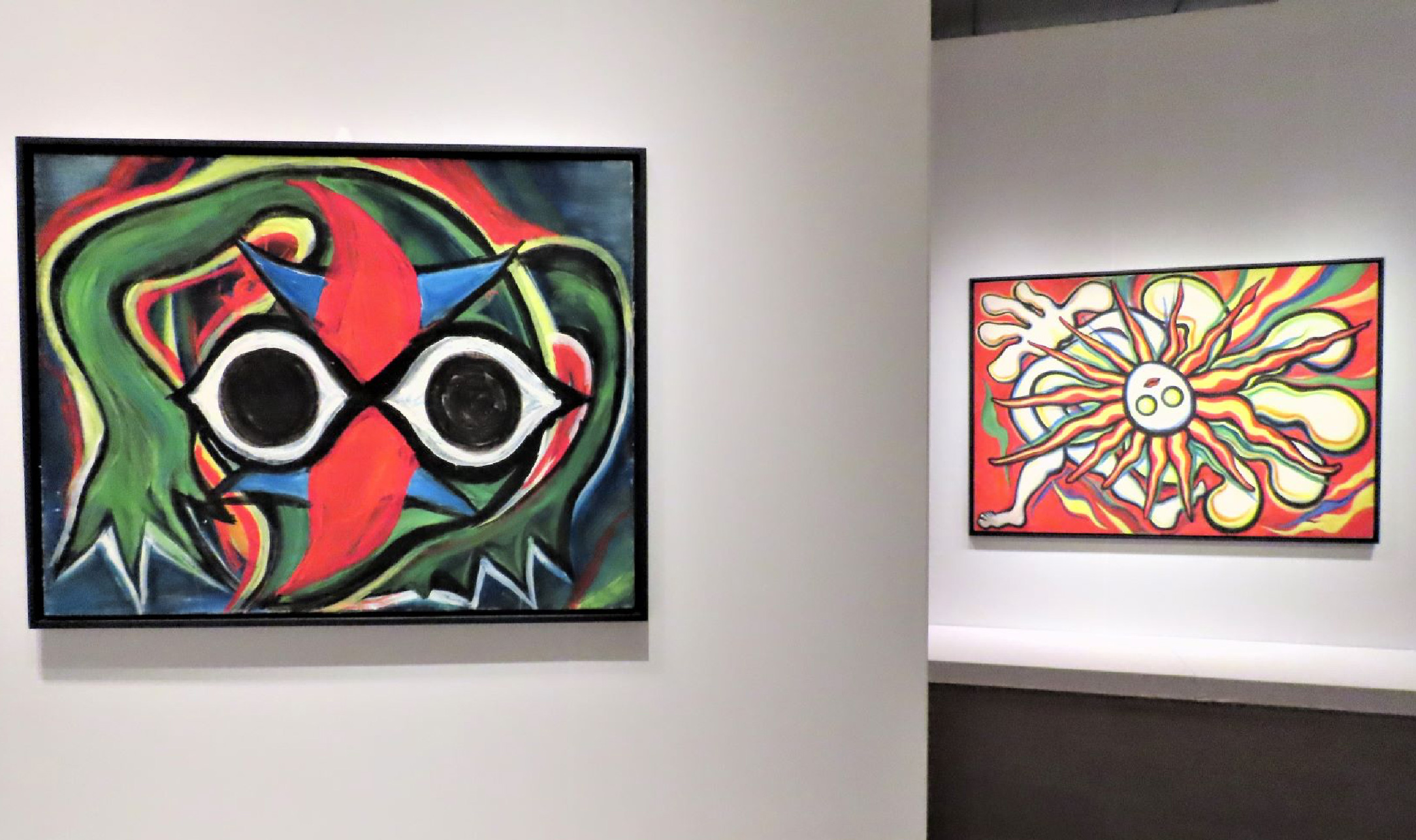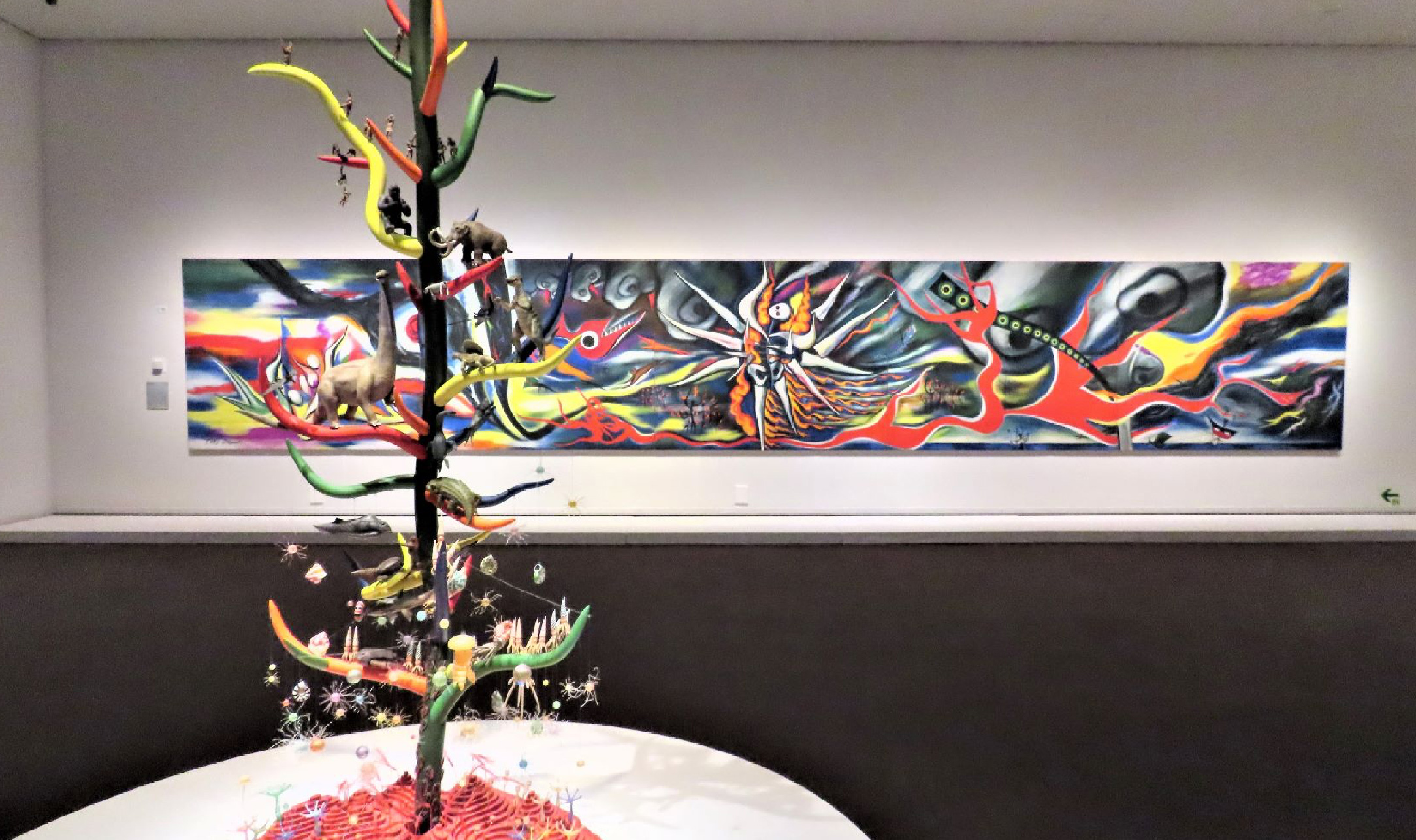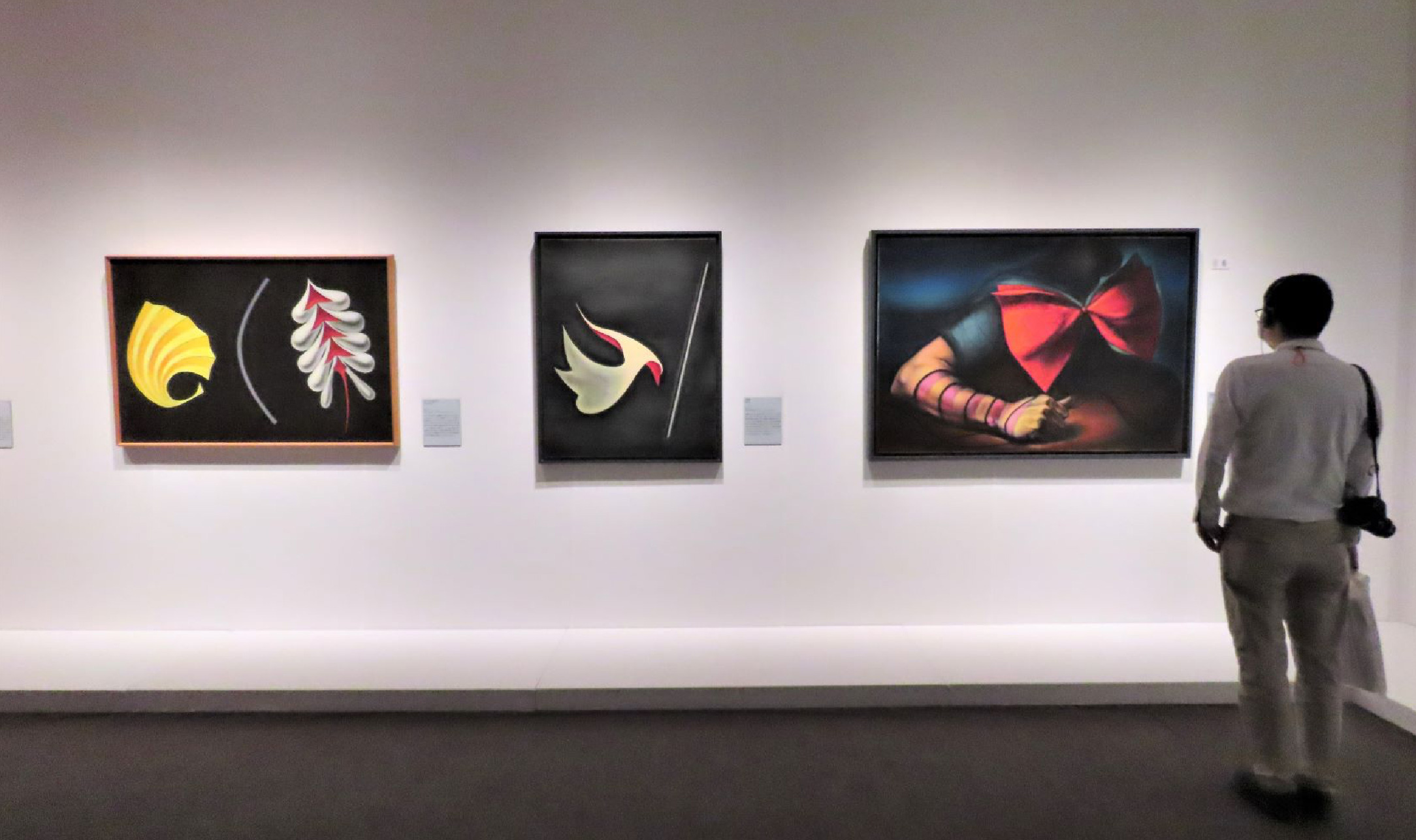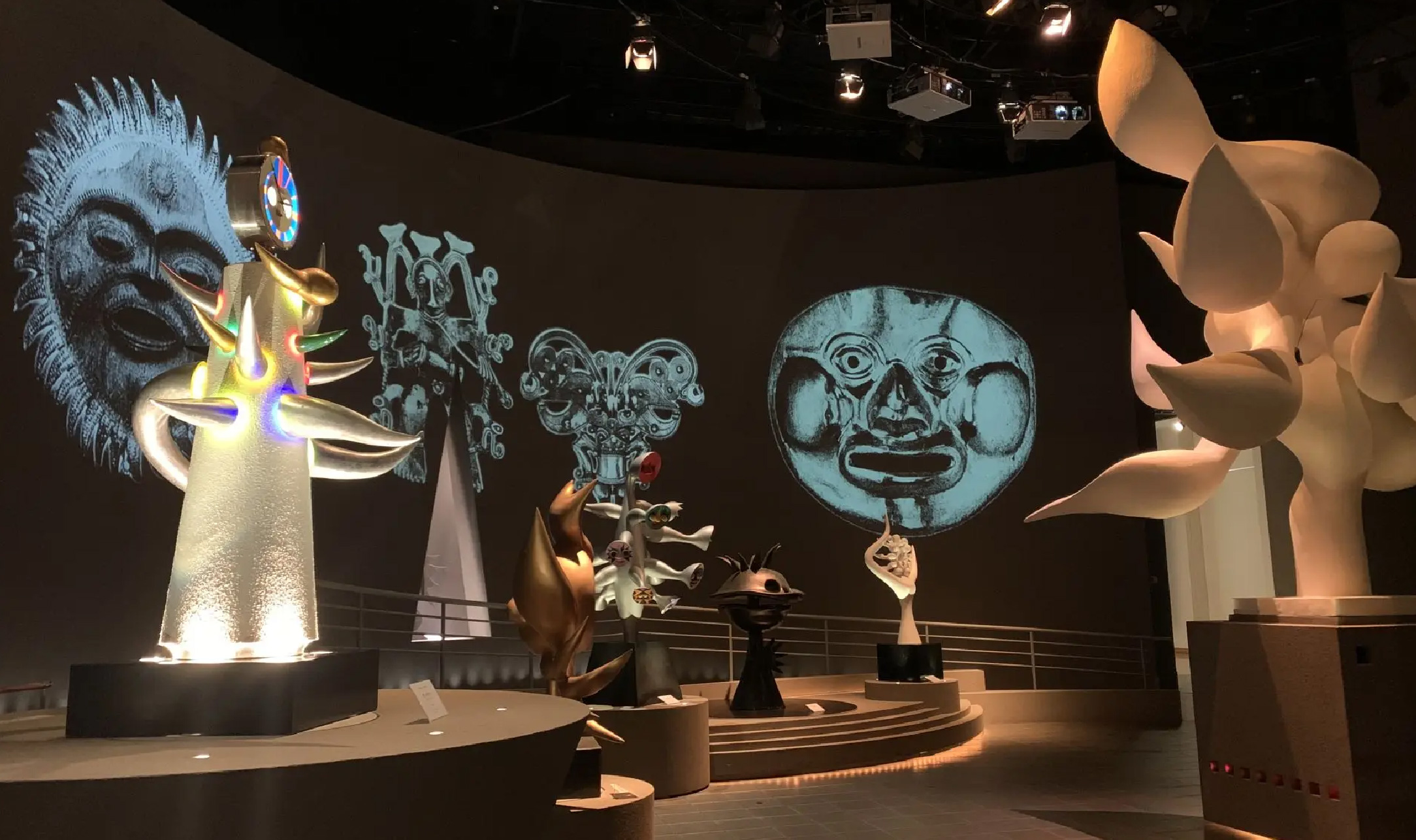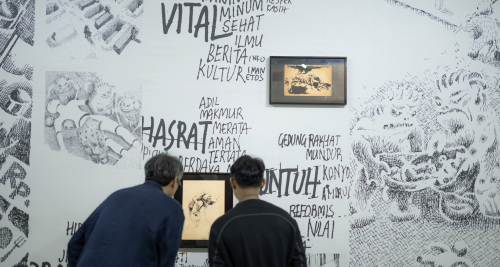Taro Okamoto: Art is an Explosion
written by Dhanurendra Pandji
Amidst the 1970 Osaka Expo roar, a 70-meter tall concrete and steel-framed statue rose like a mythological figure born from humanity's collective dream. As part of the largest expo in history, 64 million visitors from 77 countries witnessed the "birth" of Taiyo no To or the Tower of The Sun, created by Taro Okamoto. In response to the theme “Progress and Harmony for Mankind” set by the Osaka Expo 1970, the artist designed this tower as a symbolic statement about the cycle of time, the power of life, and the courage to face the uncertainties of the future. Every element of the Tower of the Sun serves as a call to confront the absurdity of the world. In the rapid current of the times, the Tower of the Sun remains uncompromising. More than five decades later, the statue still stands tall, stimulating reflective thinking while evoking a universal primal sensation.
Taro Okamoto was an avant-garde Japanese artist who used painting, murals, and sculpture as the main mediums of his works. In the intellectual world, Okamoto was also known for his theoretical contributions to the history of culture and aesthetics in Japan, especially the connection between the Jomon era ceramics and the avant-garde aesthetics of Japan. Okamoto explored Japanese aesthetics through ethnographic studies and his experiences with the Surrealist movement in Paris. However, rather than viewing ethnographic objects as something separate, he specifically used Jomon ceramics artifacts to formulate an original theoretical foundation for the development of avant-garde art in Japan.
Okamoto was born on February 26, 1911, in Kawasaki, to Ippei Okamoto, a cartoonist, and Kanoko Okamoto, a writer. Growing up in an artistic family inspired the young Okamoto to take painting courses under a famous Western-style painter in Japan. He formally studied painting at the Tokyo School of Fine Arts before his artistic and intellectual journey expanded in Europe. During his time in Paris, he attended philosophy classes, primarily focusing on aesthetics, at the Sorbonne University. Like many artists in Paris at that time, he grew increasingly interested in studying the history of aesthetics through ethnographic studies, which later became his lens for analyzing Japanese culture.
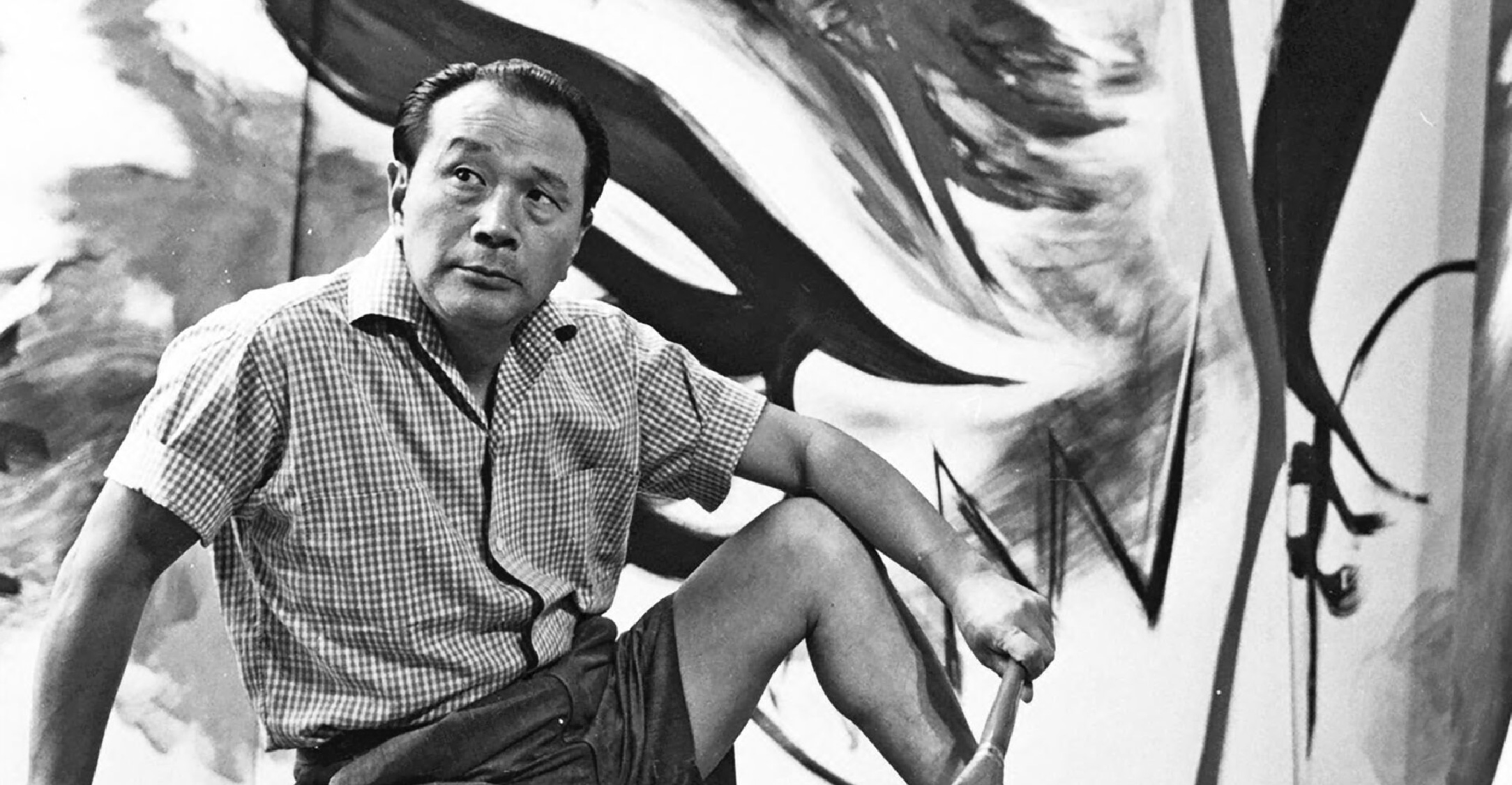
In Paris, he built networks with prominent avant-garde figures such as André Breton, Kurt Seligmann, Max Ernst, Pablo Picasso, Man Ray, Robert Capa, and Gerda Taro. His experience viewing Pablo Picasso's Pitcher and Bowls Fruit (1931) directly immediately inspired Okamoto to follow the Abstract art movement. From 1933 to 1937, he was part of the Abstraction-Création group, balancing the surrealist influence initiated by André Breton. Okamoto was often associated with the surrealist movement, and his painting Itamashiki ude ("The Wounded Arm") was specifically included in the 1938 International Surrealist Exhibition in Paris.
Due to the German invasion of France, Okamoto chose to return to Japan in 1940. Amidst World War II, his thoughts on the fundamental contradiction between the two artistic movements he had embraced began to develop. Eventually, in 1947, he formulated a new artistic principle known as Taikyoku-ism or Polarism. This idea emerged from his philosophy lectures on Hegel while in Paris. He questioned dialectics and refused to reconcile thesis and antithesis into a synthesis. According to him, opposing things can remain separate in fragments without any resolution. Applied to art, Okamoto viewed abstract painting as a synthesis process that unites color, movement, and sensation into a single expressive whole. Therefore, in his painting The Law of the Jungle (1950), he deconstructed this principle. The painting shows elements that are permanently fragmented—each line and color stands alone, without forming clear relationships with one another. There is no center or narrative guiding the viewer's eye; instead, a constant tension exists between the dimensions of flatness and depth, clarity and ambiguity, as well as representational and abstract forms. Other works such as Dawn (1948) and Heavy Industry (1949) also reflect this principle of polarism, where visual and conceptual contrasts create a dynamic dialogue that continuously challenges the viewer’s perception.
In the late 1950s, Taro Okamoto began exploring the world of three-dimensional sculpture. His works introduced unique and provocative forms, such as Alien Named Paira (1956), Young Clock Tower (1996), Tree of Children (1985), Sun Tower (1985), and The Gate to the Dynamism (1993). In creating these sculptures, Okamoto was inspired by archaeological artifacts from the Jōmon period, particularly the pottery and distinctive dogū figurines. He discussed this idea in an essay titled Jōmon Doki Ron: Shijigen to no Taiwa or On Jomon Ceramics: Dialogue with the Fourth Dimension, where he introduced his aesthetic views in depth.
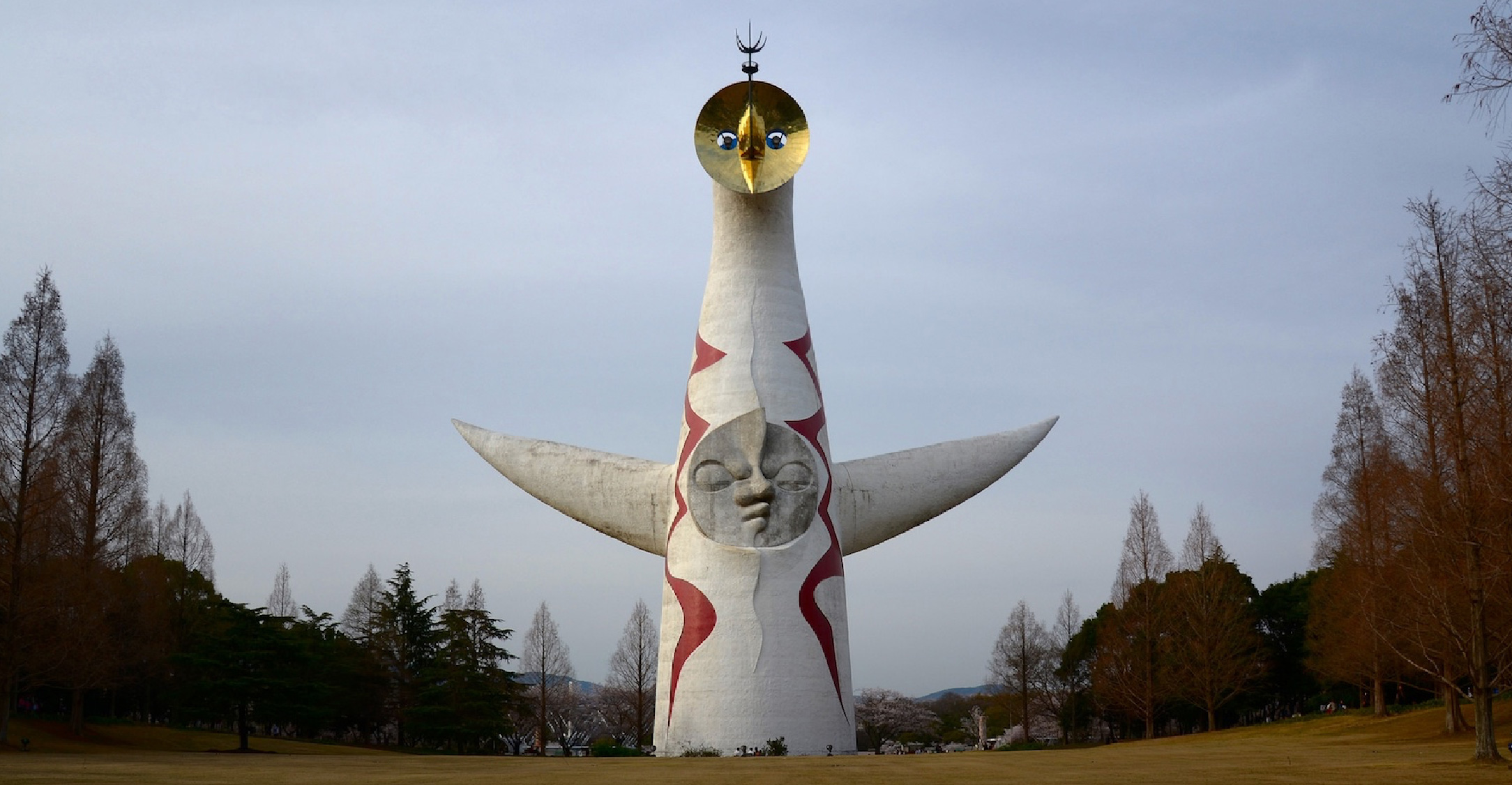
According to Okamoto, the expressive patterns on Jōmon ceramics reflect raw, passionate energy, far from being controlled. For Okamoto, this was an authentic expression that had disappeared from modern Japanese art. In contrast, the aesthetics of the Yayoi period, which came after Jomon, tended to display simplicity and calm harmony. Although the Yayoi style is often associated with traditional Japanese concepts, Okamoto saw the potential for an artistic revolution in the wild energy of Jōmon. This perspective led him to embrace primitivism, a concept he derived from ethnographic studies and Surrealist discourse about “The Other.” For Okamoto, primitive art represented a form of expression that preceded logic, something pre-logical and full of intuition. By adopting this spirit, he believed young Japanese artists could free themselves from the constraints of past aesthetics. Through destroying traditional boundaries and rebuilding new artistic expressions, Okamoto proposed a path for Japanese art to stand on equal footing with Western modern art.
Looking back at the Tower of the Sun, built to celebrate the Osaka Expo 1970, Taro Okamoto’s legacy is not only entrenched in the realm of avant-garde art but also permeates pop culture. In 1997, Naoko Yamano, guitarist of the pop/punk band Shonen Knife, released the song Tower of the Sun as a tribute to the Osaka icon. In Naoki Urasawa’s manga 20th Century Boys, the iconic tower becomes the main symbol of the "cult of the friend," an evil organization attempting to take over the world. In the world of Pokémon, the design of the Sunyshore Tower seems to be a direct homage to the Tower of the Sun. Even in the Naruto anime, the character Deidara, an artist obsessed with destruction, echoes the essence of Okamoto’s work through a suicide explosion attack reminiscent of the Tower of the Sun.
Ultimately, Taro Okamoto was not merely an artist who created monumental works, but also a thinker who challenged the way we view art. For him, art was not just an aesthetic object to be observed but an explosion of expression born from the clash of ideas, emotions, and contradictions. His legendary statement, “Art is an explosion!” is not just an empty metaphor but a firm declaration about the creative spirit that erupts, rejecting stagnation, and continually celebrating the power of life. In every visual expression, in every symbol inspired by him, the echo of Okamoto’s artistic explosion still resonates today.
